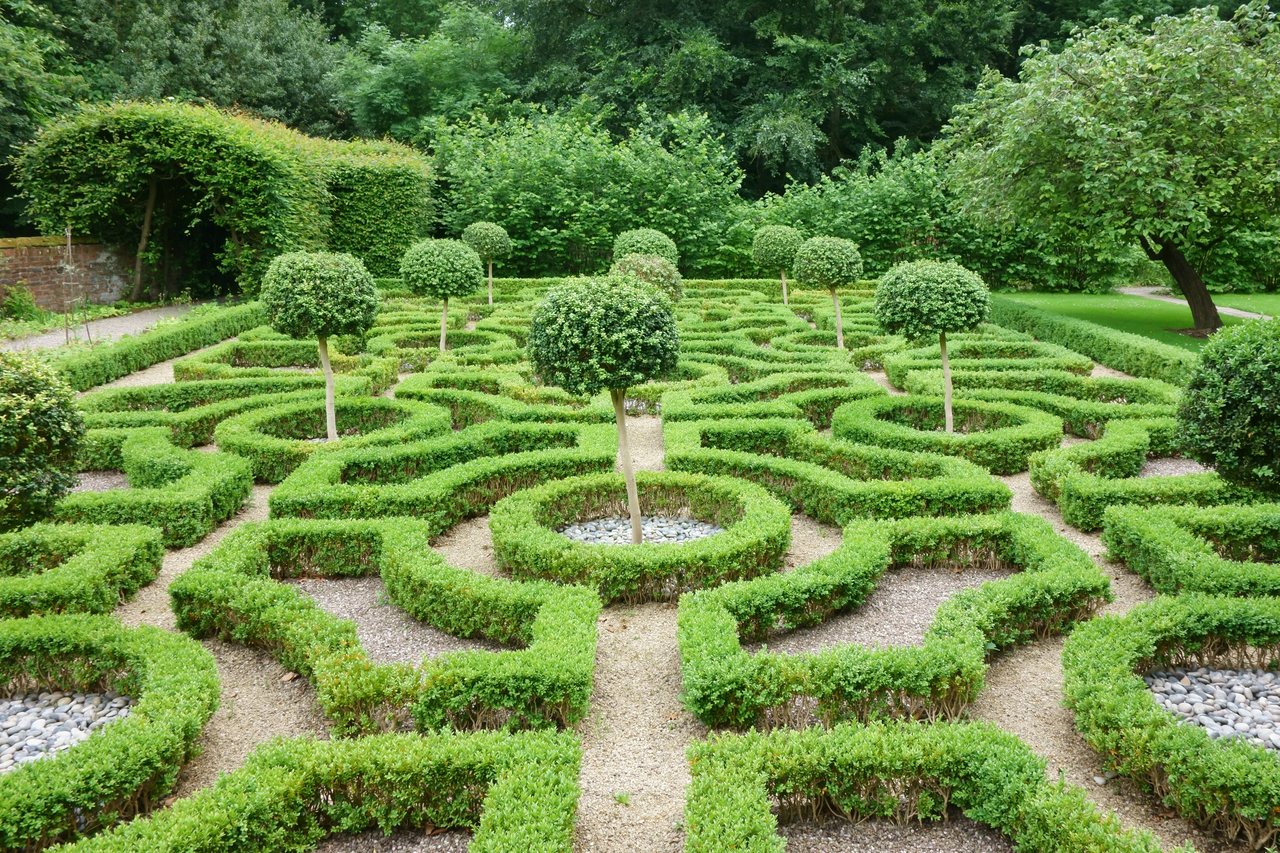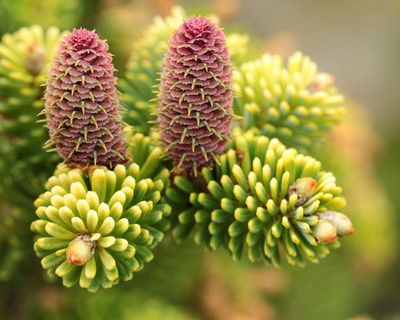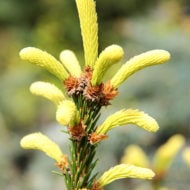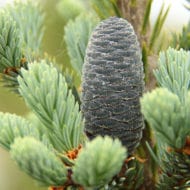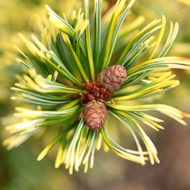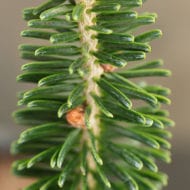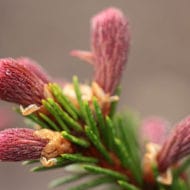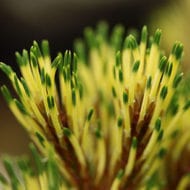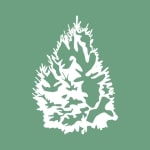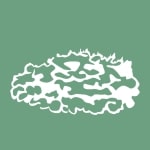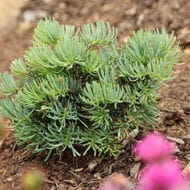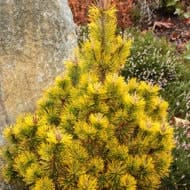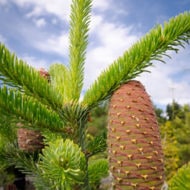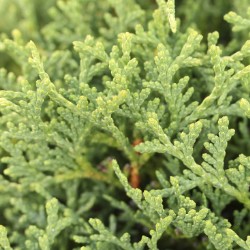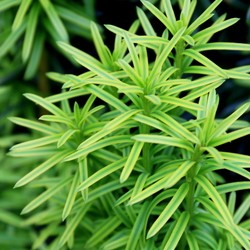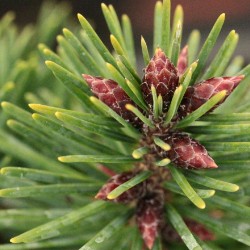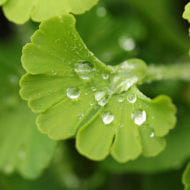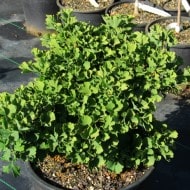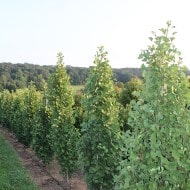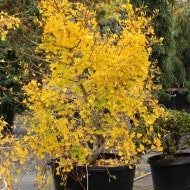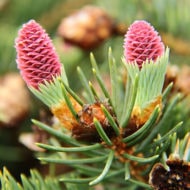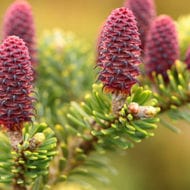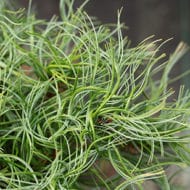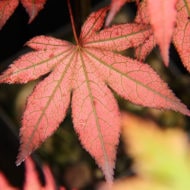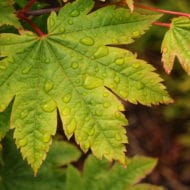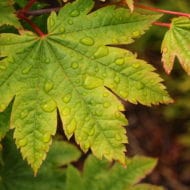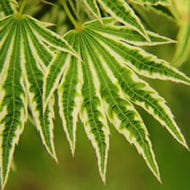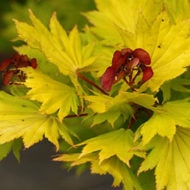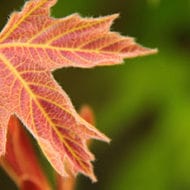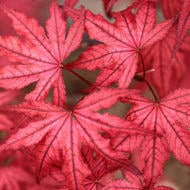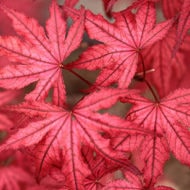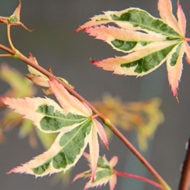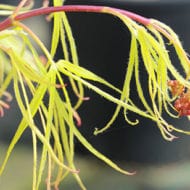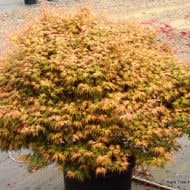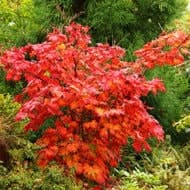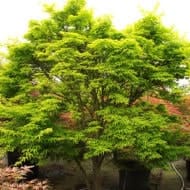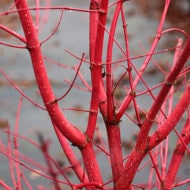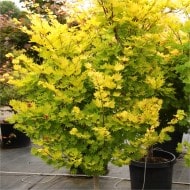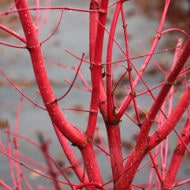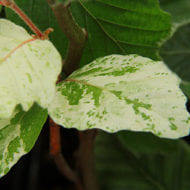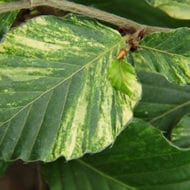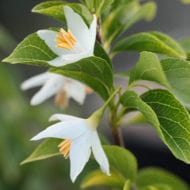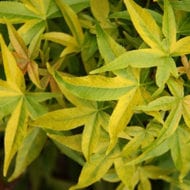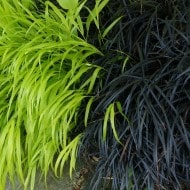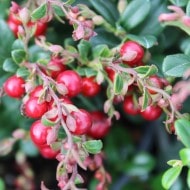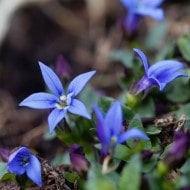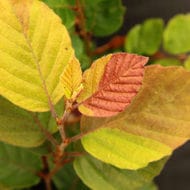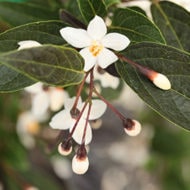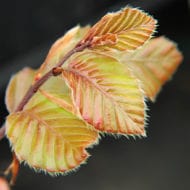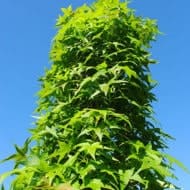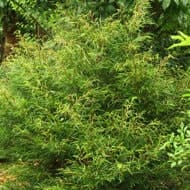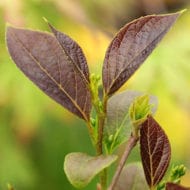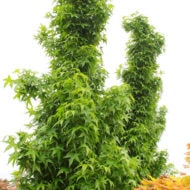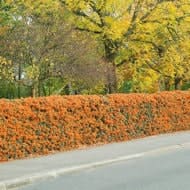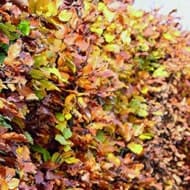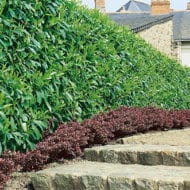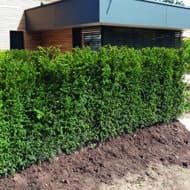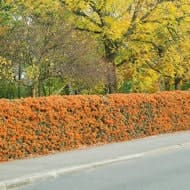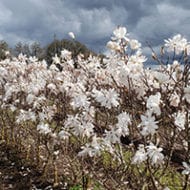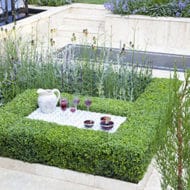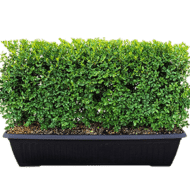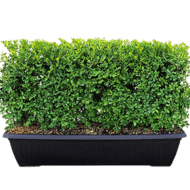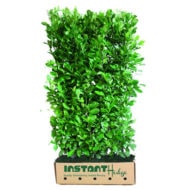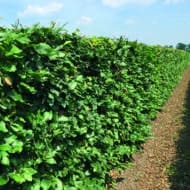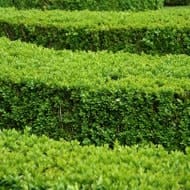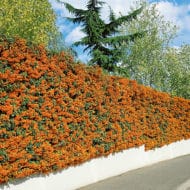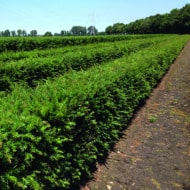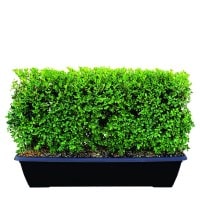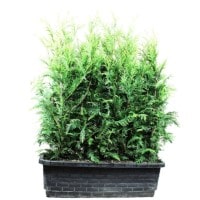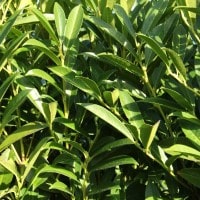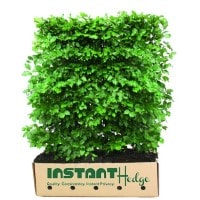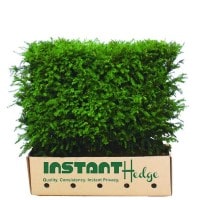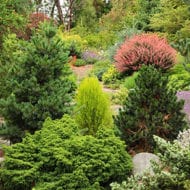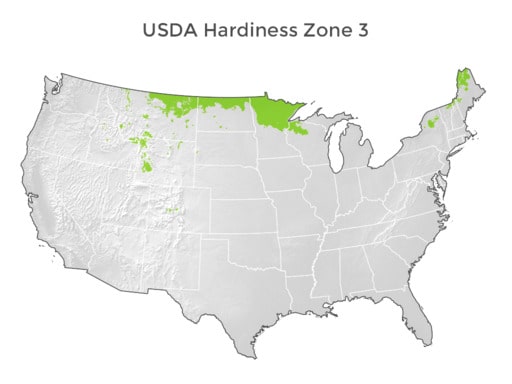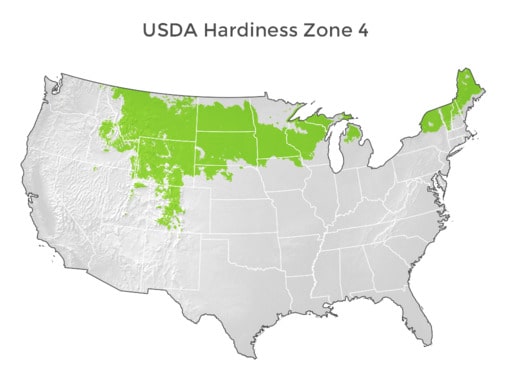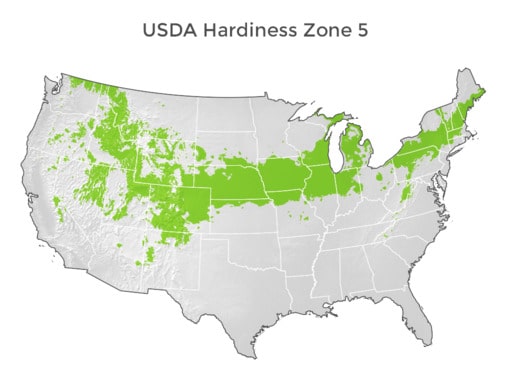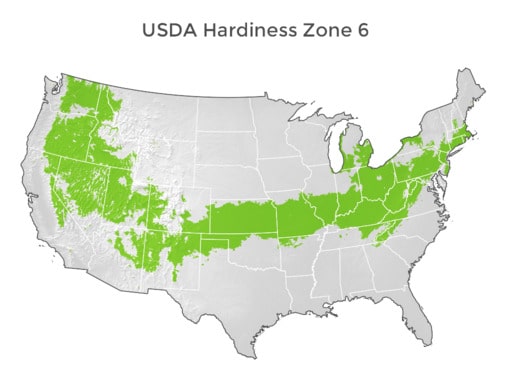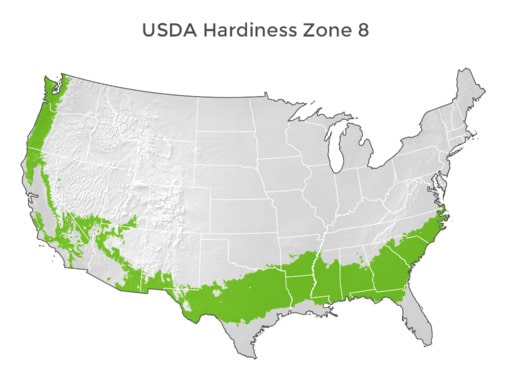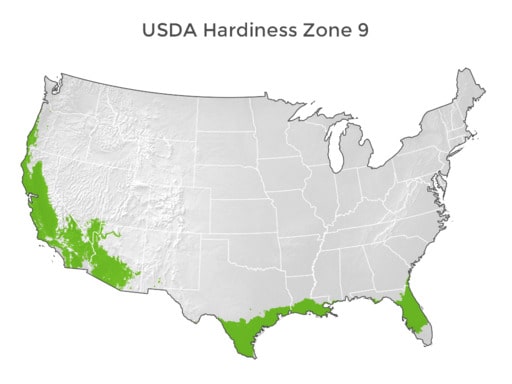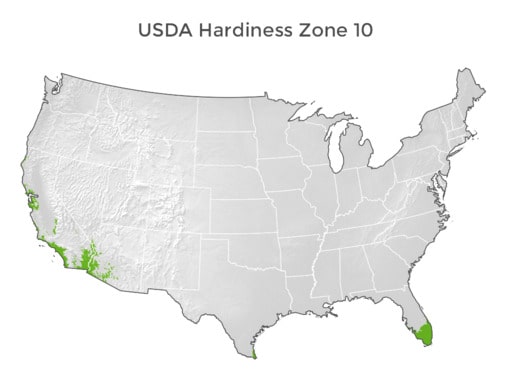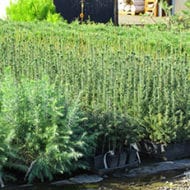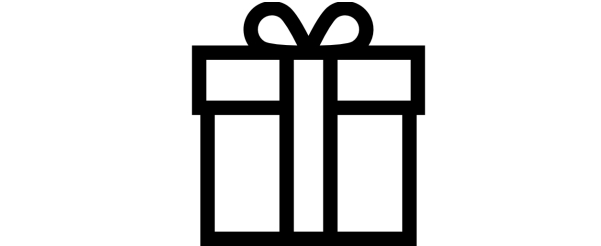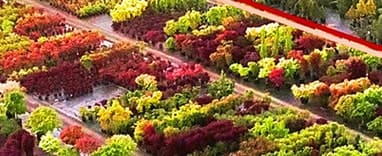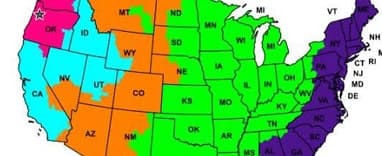Decorative Gardening
Agriculture began in the Fertile Crescent and West Asia during the Neolithic Age 4,000 to 6,000 years ago. It extended in an arc from Ancient Egypt to India, and the influence of West Asian gardens spread east to China, Japan, and surrounding countries, and west to Europe. Decorative gardening grew out of an understanding of plant cultivation and a yearning for beauty.

As early as 2800 years ago, Egypt, Persia, and Babylon were creating walled enclosures, shade trees, pools, and flowing water around their palaces. A garden plan from 2400 years ago of a garden in Thebes, Egypt, depicted a vine-bordered walkway, tree-lined avenues, and rectangular ponds and garden pavilions separated by walled enclosures. Later, the courtyard gardens of ancient Greece influenced those of Classical Rome where small landscapes were created within courtyards with clipped and trained trees.
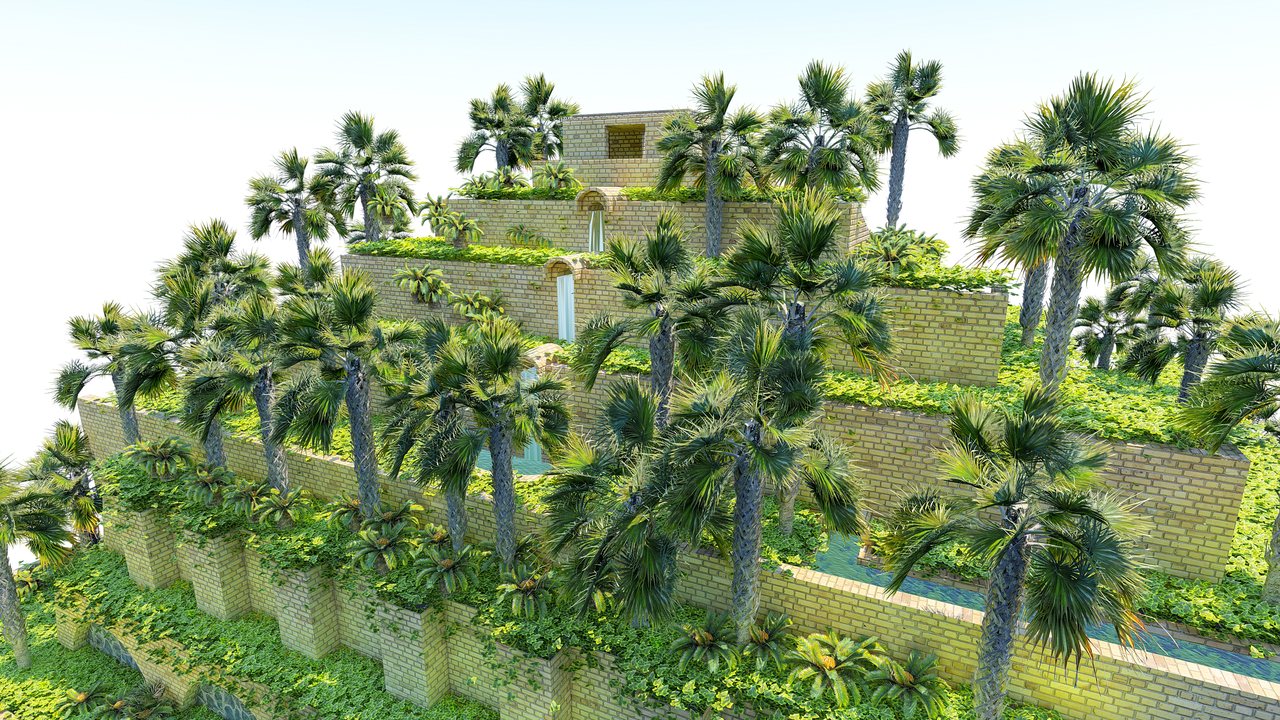
Hedges
Hedges have a long history and are closely intertwined with topiary. They first came into being as hedgerows that were the strips of woodland left as land was cleared for crops during the Bronze and Iron Ages 2,000 to 4,000 years ago. During the time of the Roman Empire in Europe, around 2,000 years ago, new hedges were planted as boundaries between fields and properties. These boundary hedges developed into the decorative, clipped hedging of formal gardens, mazes, knot gardens, parterres and topiary that were commonly shaped out of boxwood and a species of laurel.
There have been some famous hedges in history. Chateau Villandry, built in the 16th century in France, used hornbeam hedges along paths, to delineate spaces, and for its famous 1300+ foot-long maze. The chateau and its gardens have gone through many changes and updates since they were built in 1532, but in the early 20th century, the gardens were restored to the formal Renaissance style with hornbeam and box hedges in designs enclosing lawns, pools, and fountains.
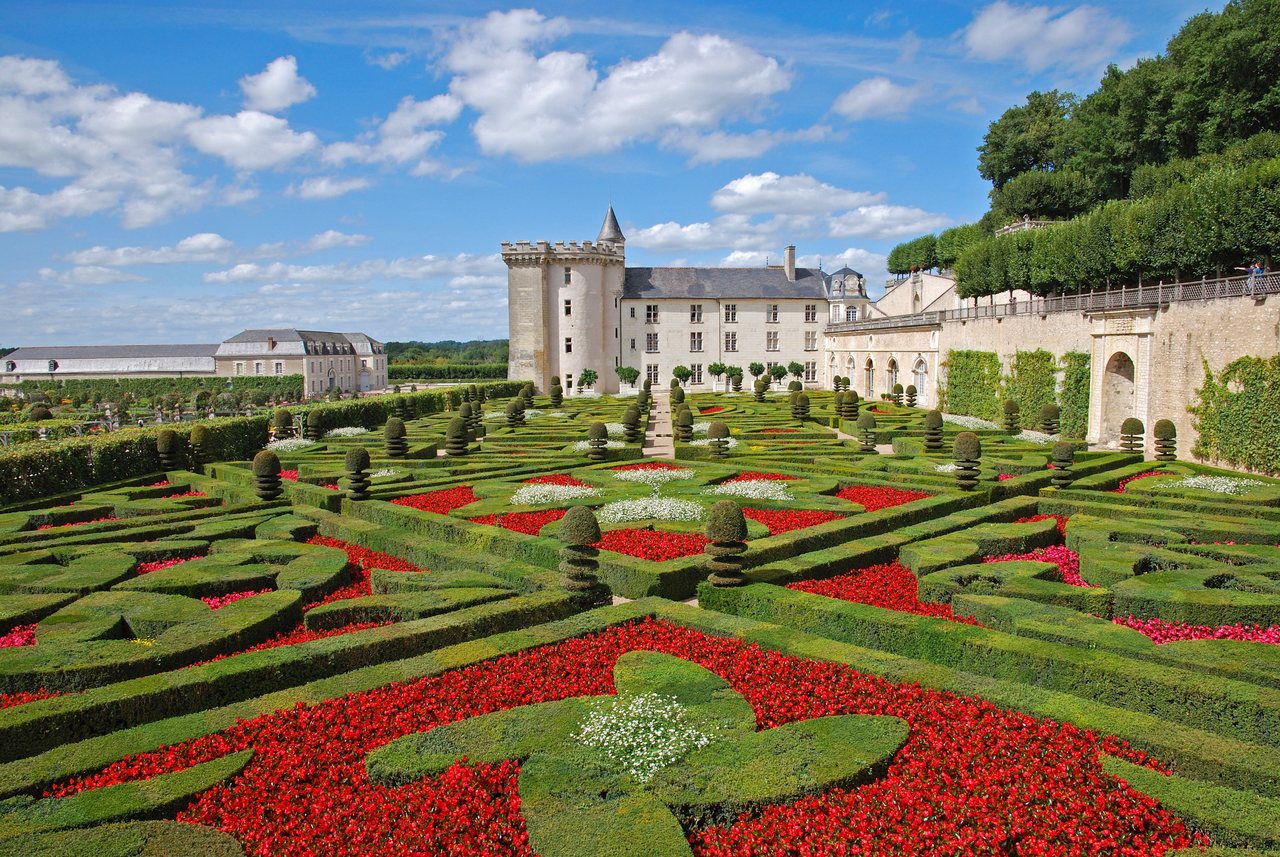
During the Renaissance, Italian gardens used flowers extensively within geometric compartments of boxwood hedges or trimmed perennial herbs such as rosemary or lavender. Evergreen trees such as laurel, holly, and cypress were important for shade and contrasted with the ever-present statuary and stonework.

The gardens at the Het Loo Palace in Apeldoorn, Netherlands, were built in the mid-17th century. This was at the height of Dutch Baroque art, architecture, and gardens that was a period of wealth and cultural achievements. Symmetrical parterres, fountains, reflecting pools, and gravel walks surrounded the palace. Hedges were cut into complicated designs which often bordered or enclosed brightly colored flower gardens.
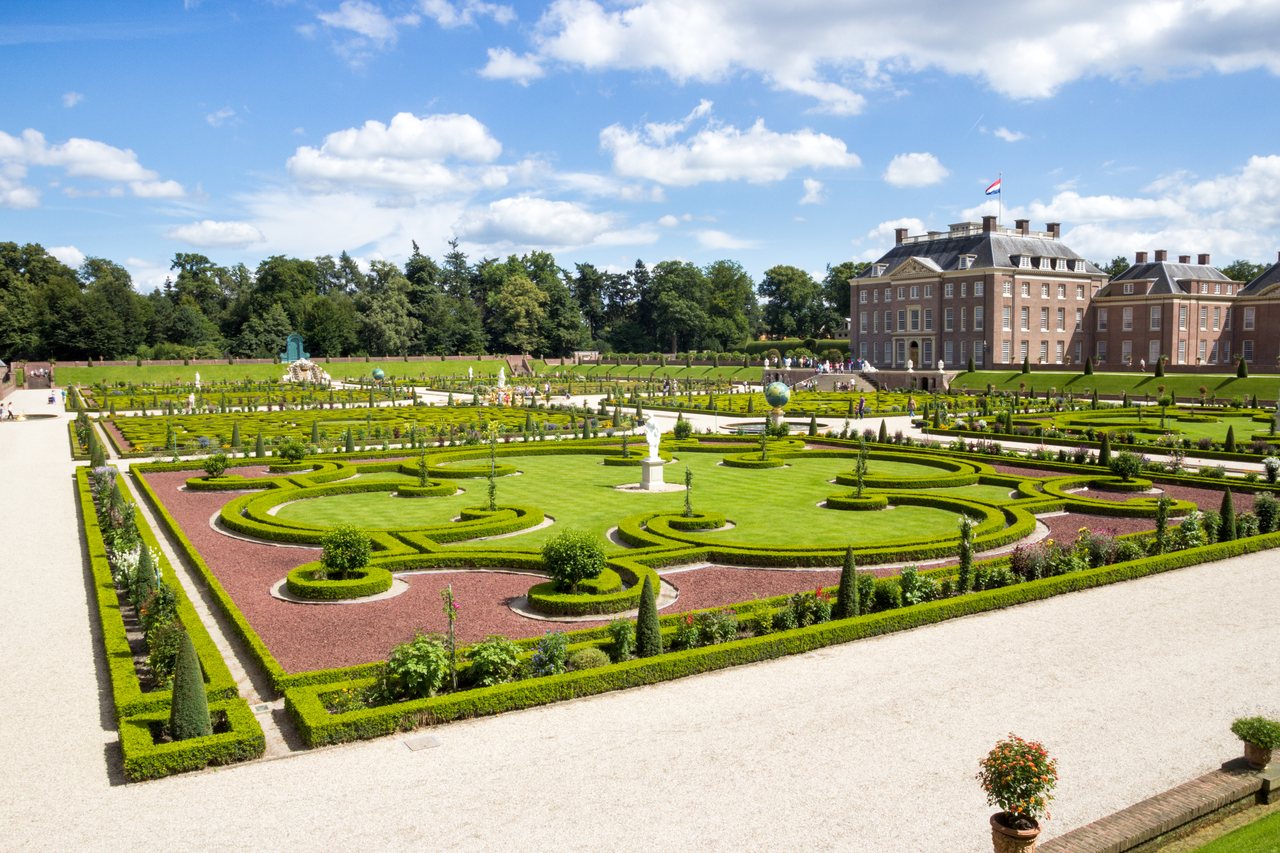
The famous Meikleour Beech Hedge near Stobehill Castle in Scotland was planted in 1745. In 2019, it measured 96 feet high and 1,740 feet long, and is still robust and beautiful.
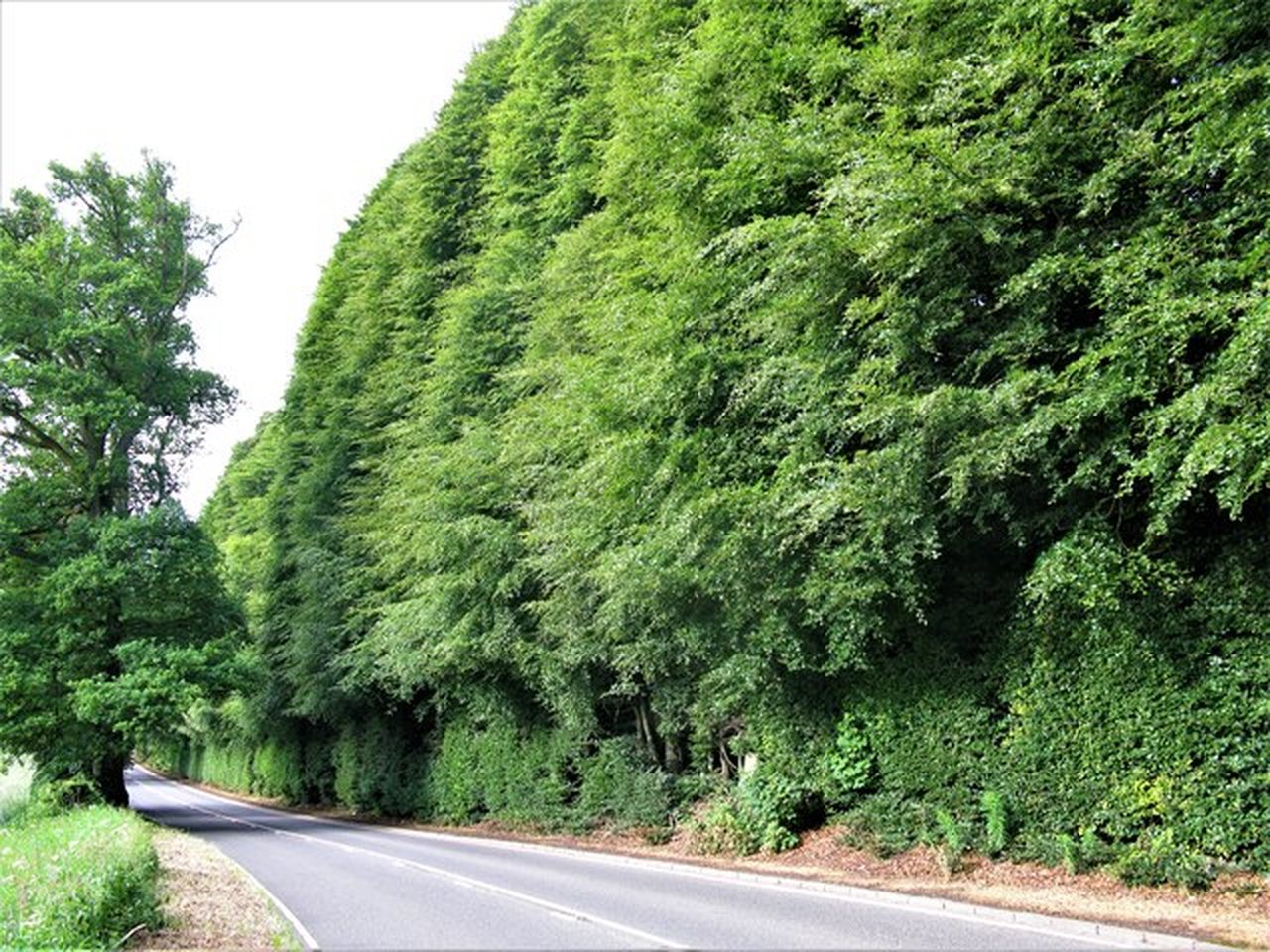
The Great Hedge of India was a hedge of commerce and had nothing to do with decoration. It was built by the British East India Company to force compliance with a salt tax between the eastern and western parts of India. The Great Hedge ran over 800 miles northwest to southeast, and was created out of thorny plant material such as Indian plum, Euphorbia, and prickly pear cactus to keep smugglers from accessing salt from either coast without paying tax.
Topiary
Topiary is the art of training perennial plants into geometric or fanciful shapes by repeated pruning.
It began in Rome where the usually plain atrium, or courtyard, was planted with a miniature landscape decorated with low hedges and clipped trees. The barbarian hordes that scourged the Roman Empire extinguished the interest in formal gardens, hedges, and topiary. They went out of style during the Middle Ages mainly for economic reasons, and only survived in the monasteries. Interest in formal gardens was revived during the Renaissance in Europe, and exquisite examples of topiary from that time are the gardens at the Versailles Palace in France, at Hampton Court in England, and at the Het Loo Palace in the Netherlands.
The spectacular gardens at the palace of Versailles took 40-50 years to build starting in 1661. They encompass nearly 2,000 acres of lawns, parterres, sculptures, fountains, pools, hedges, and the intricate art of topiary. There are 700 topiary hedges and trees trimmed into 60 shapes. Each shape is unique and is dictated by the branching pattern of the individual tree in cones, pyramids, layered forms, spires, and spheres — all created out of yew. At Versailles, the artistry of topiary has proudly been passed down from generation to generation of gardeners for over 300 years.
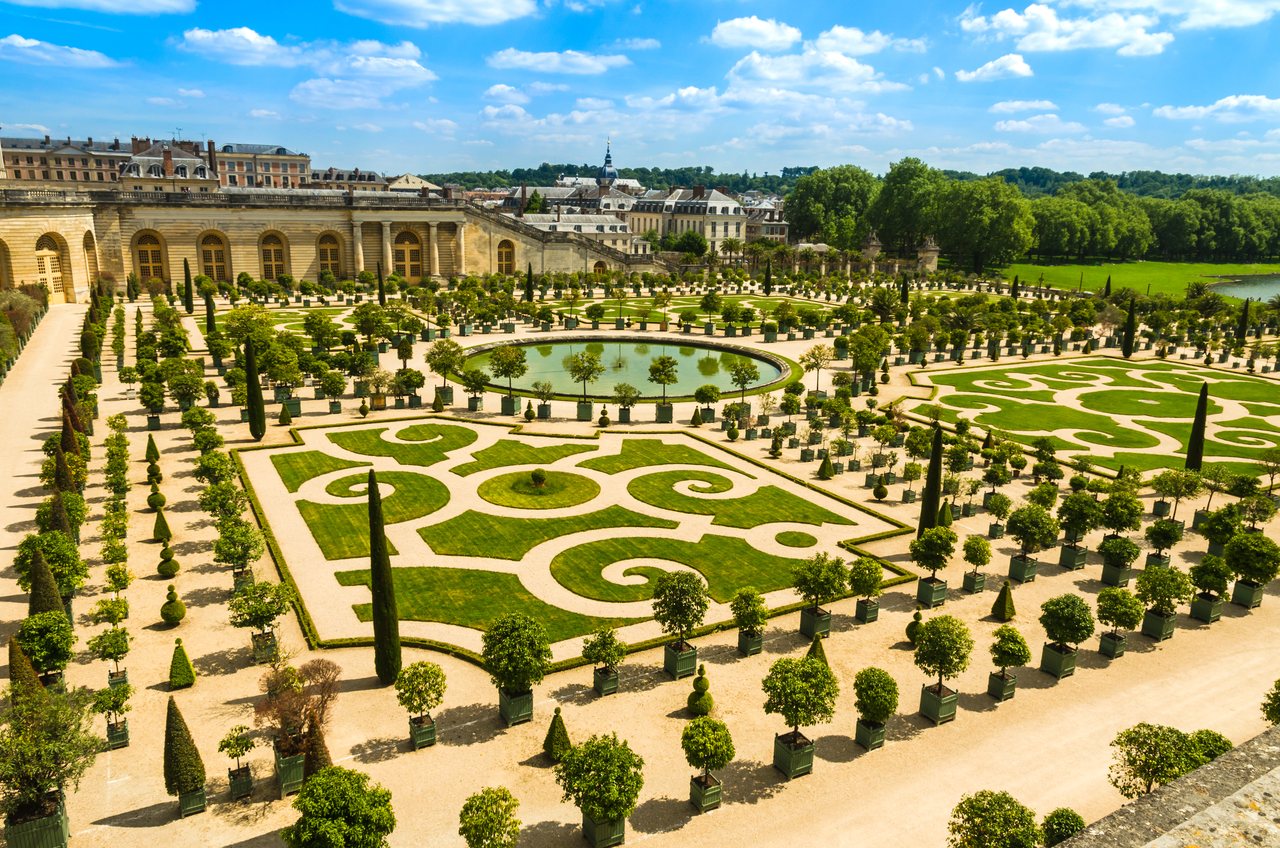
Hampton Court Palace near London was built to rival Versailles and is a good example of French influence on English gardens in the 17th century. During William and Mary’s reign (1689-1702), yew and box topiary became more popular. Hampton Court features formal geometric gardens with the famous hornbeam hedge maze, and topiary spires, pinnacles, and spheres of yew and box.
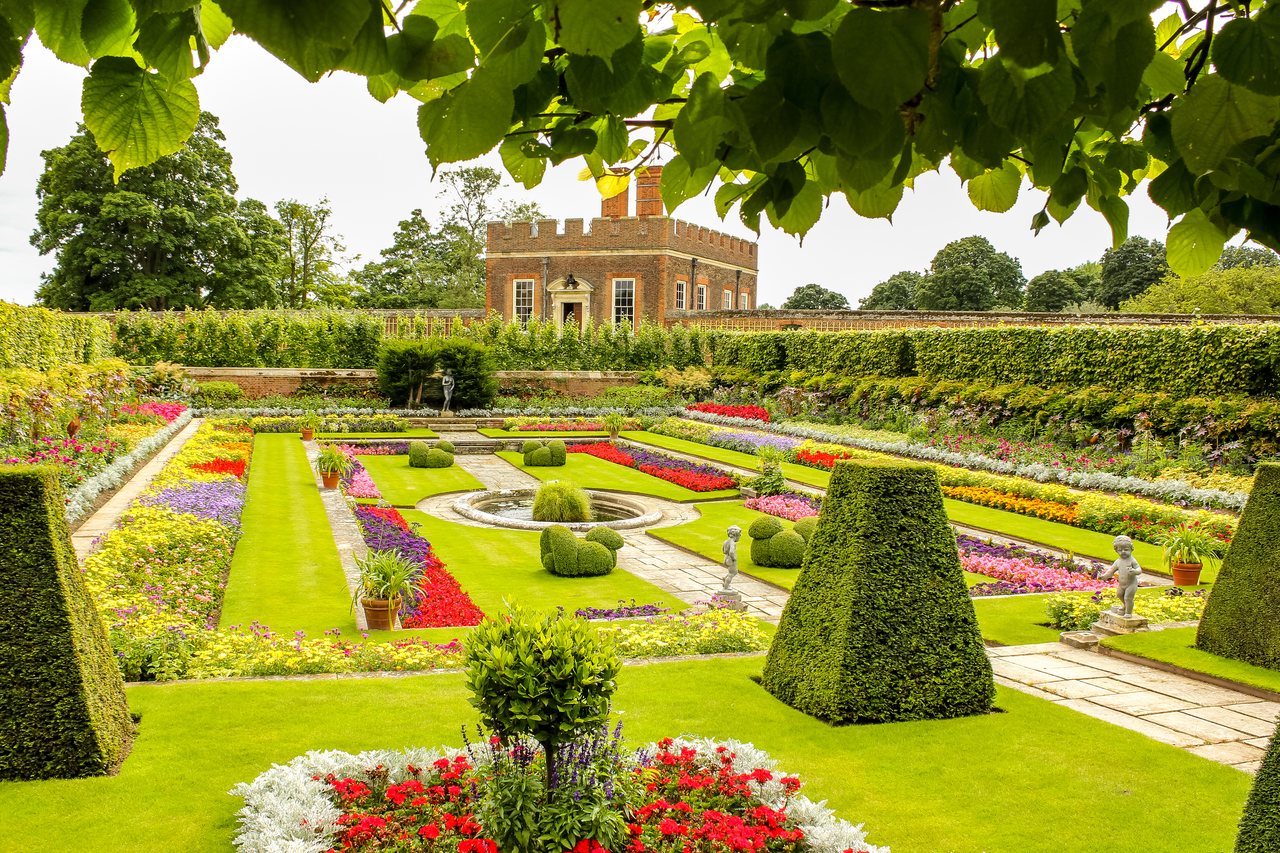
The gardens at Het Loo palace in the Netherlands, built in the 17th century, are considered the Dutch Versailles and have beautiful examples of box topiary in cones, spires, spheres, and spirals.
The use of topiary in Europe declined in the 18th century because stonework statuary and walls were used more frequently than plants. It flourished in England and in the Netherlands, however, because plants grew well in that climate and stonework was more expensive. Gradually, the formal style was replaced in most of Europe, including England and the Netherlands, with a more natural landscape style of rolling lawns, ponds, and shade trees. Increasing world trade brought exotic and interesting flowers to Europe so that more flowers were used, mainly in cottage gardens and small towns.
Topiary, box hedges, and parterres in Colonial Williamsburg, Virginia, in the 18th century, were fine examples of the Anglo-Dutch influence in Colonial America. Colonists remembered how their gardens looked during the reign of William and Mary and sought to copy them to lend a familiar and gracious atmosphere to their new home. This formal style denoted wealth, power, and refinement.
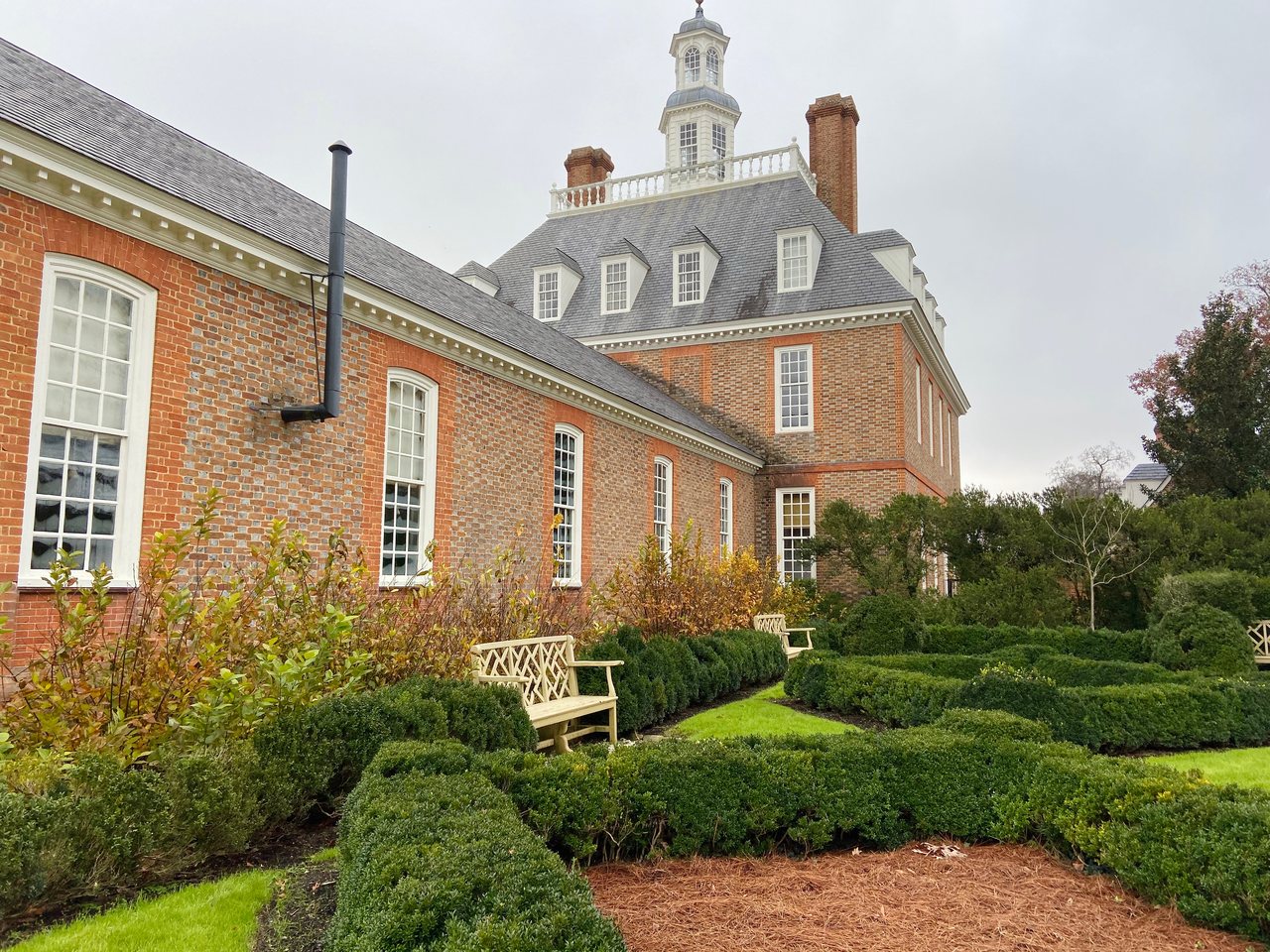
The Belmont Estate near Philadelphia, Pennsylvania, was built in the 1870s with mazes, topiary, and statues reminiscent of the garden style of the 1600s, and reflected a resurgence of interest in formal gardens during the 19th century. In the 20th century, Disneyland and Disney World used populated their parks with magical Disney creatures in topiary designs.
Training Hedges and Topiary
Creating topiary takes patience, skill, and years of training the plants to achieve the desired effect. There are four basic methods of creating a topiary shape: freeform trimming, the stuffed wire form, container topiary, and the potted wire frame.
Freeform trimming is the method that has been used throughout gardening history, and the method that takes the most skill. Plants that are established but still young are trained by repeated clipping, and this early training is best left to seasoned experts. After the topiary has matured, the shape is easy to maintain by trimming it twice a year depending on how formal and manicured you want it to be.
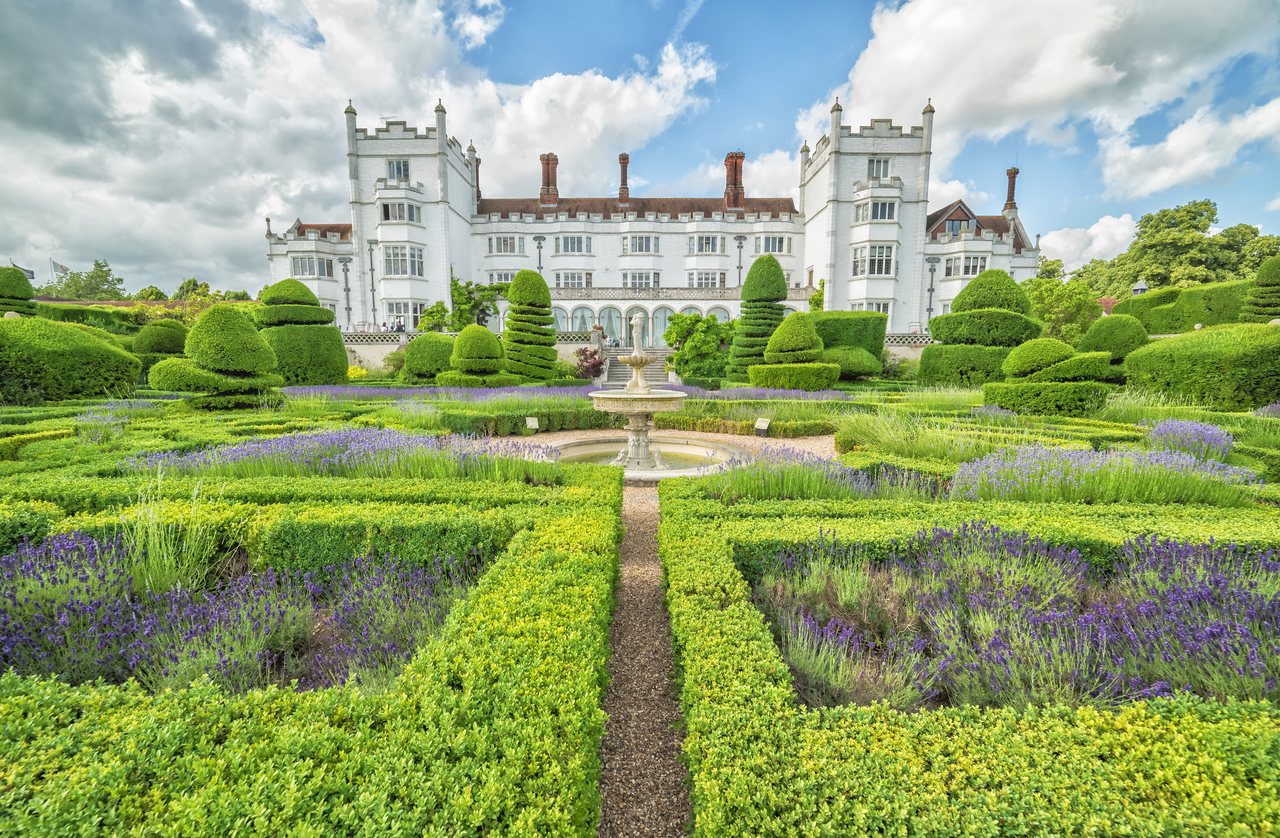
The stuffed wire method of topiary consists of a chicken wire frame filled with sphagnum moss to give the form structure, and a center of potting mix to anchor the plants and supply the nutrition. Young plants or cuttings are fed through the wire into the moss and mix, and watered well while becoming established. Pruning the plants close to the frame keeps the topiary form intact. A vine, such as miniature ivy, baby’s tears, or creeping fig will grow and cover the form.
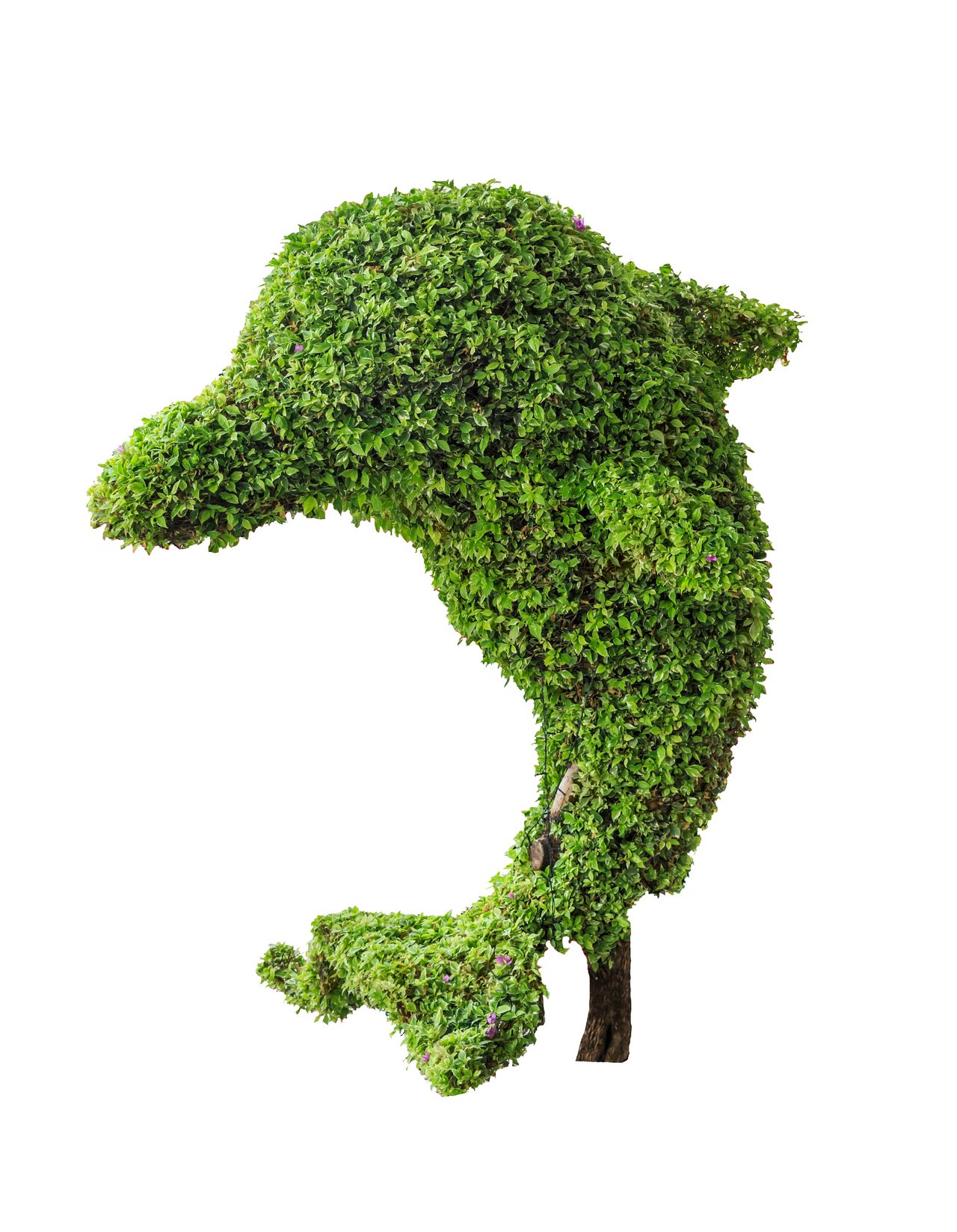
Container topiary consists of potted trees that have been clipped into a lollipop or geometric shape atop a single trunk. Lavender, rosemary, box, and yew are popular plants for this style.
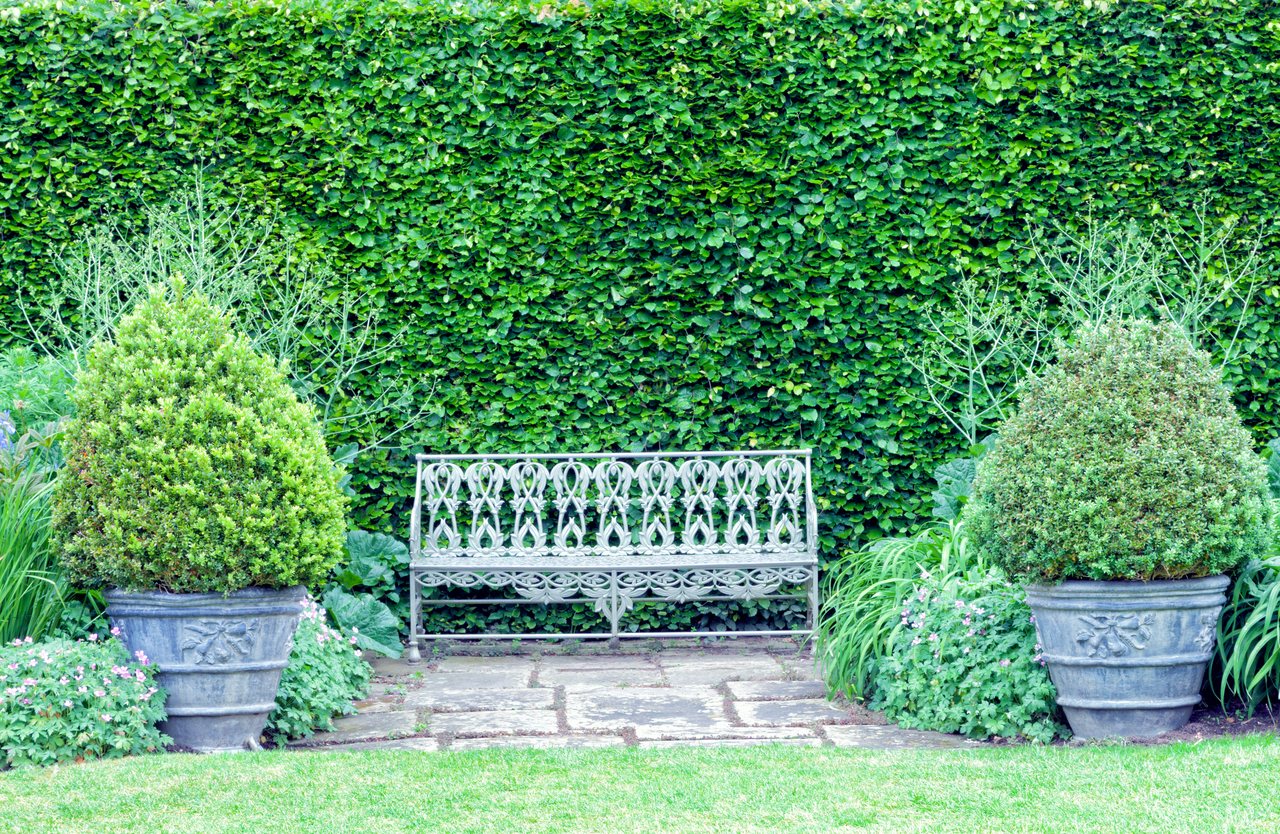
The wire frame is method is for small, potted topiary, often used as decorative houseplants. Vines such as English ivy can be trained to grow around the wire design.
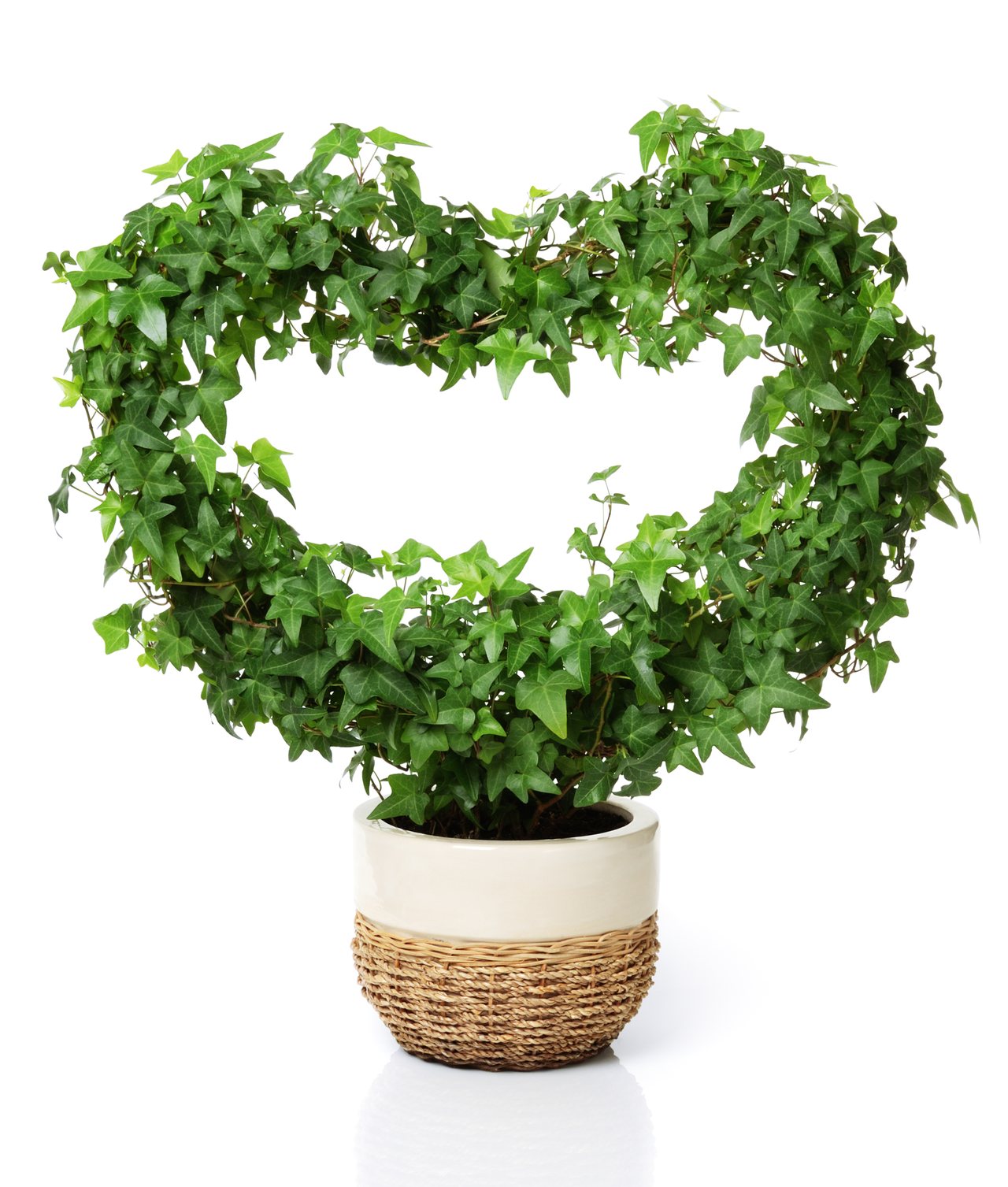
Types of Plants for Hedges and Topiary
There are a number of hardy trees and shrubs that can be used as hedging and topiary. Non-flowering evergreen plants display a consistent appearance year-round for both topiary and hedges, but deciduous plants can work for hedges, too, depending on the property and owner. Here are some commonly used trees and shrubs for hedges and topiary.
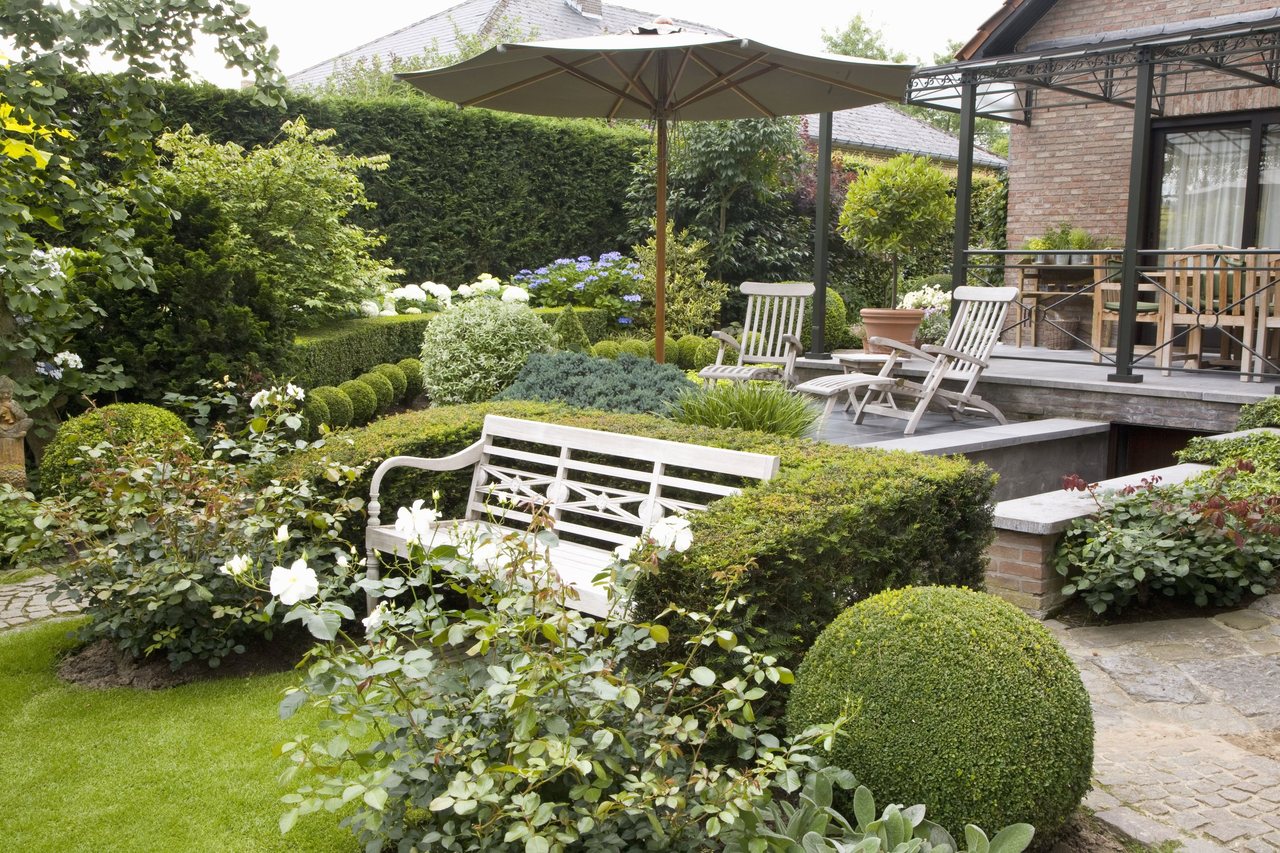
| Tree / Shrub | Attributes |
|---|---|
| Arborvitae | Dense sprays of foliage make it excellent for hedges, and can be trained as topiary |
| Beech | A beautiful, deciduous dense hedge with autumn leaves that persist during the winter |
| Boxwood | This is the classic, fine-textured shrub used for millennia in low, formal hedges It is excellent for shaping into freeform topiary |
| Dwarf Alberta Spruce | Perfect for cone or pyramidal freeform topiary |
| English Ivy | Attractive vine for stuffed wire or wire-frame topiary |
At Conifer Kingdom, we offer many types of trees and shrubs that can be grown as beautiful hedges. Arborvitae, beech, boxwood, laurel, and yew, among others, are offered individually in sizes from small tree pots to a five-gallon size. Depending on the variety, these plants make handsome additions to large, small, formal, or informal garden plans. Our pre-grown MiniHedges of Green Mountain Boxwood, box honeysuckle, Hicks Yew and Little Simon Arborvitae are in units that are ready to plant. All of these would be perfect for a low hedge and would need trimming once or twice a year to keep them at the desired size. In addition to MiniHedges, we offer larger pre-grown hedge units from InstantHedge that are ready to plant. We offer both evergreen and deciduous options. Evergreen trees and shrubs: Hicks Yew, Green Giant Arborvitae, English laurel, Emerald Green (‘Smaragd’) Arborvitae, Portuguese laurel, Virescens Western Red Cedar, Teton Firethorn, and Wichita Blue Juniper. Deciduous trees and shrubs: European Beech, European Hornbeam, Flame Amur Maple, Royal Star Magnolia, Cornelian cherry, and Arrowwood Viburnum. Once planted, both MiniHedge and InstantHedge pre-grown units create a mature, continuous hedge in just one day. They completely eliminate the need to wait for them to grow into the desired height and shape.
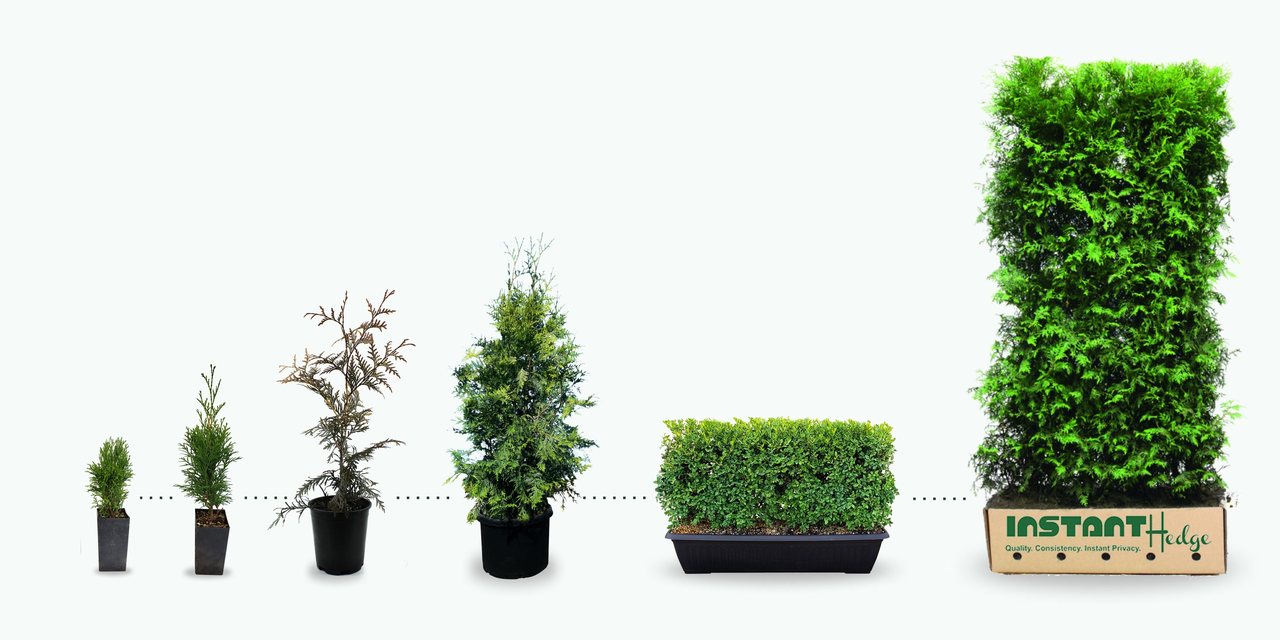
Different Hedge Sizes
Conifer Kingdom also offers individual pre-trained Green Mountain Boxwood topiary trees to enhance your garden, patio, or entranceway. Design your dream garden with a beautiful starter package of sixteen Green Mountain Boxwood MiniHedge units and two boxwood topiary trees. With this package, you will be ready to create the beginnings of a cottage garden, the border for a vegetable garden, or a formal, or knot garden.

Conifer Kingdom’s Dream Garden Starter Package
There has been a long history of the use of hedges and topiary in garden styles that have trended and faded over the millennia. In this age, we are fortunate to have a wide variety of trees, shrubs, and flowers that can be used to design a garden to suit any location, property size, and taste. Hedges provide structure and boundaries for formal and informal properties alike, and topiary designs are creative punctuations that lend interest to any garden.
